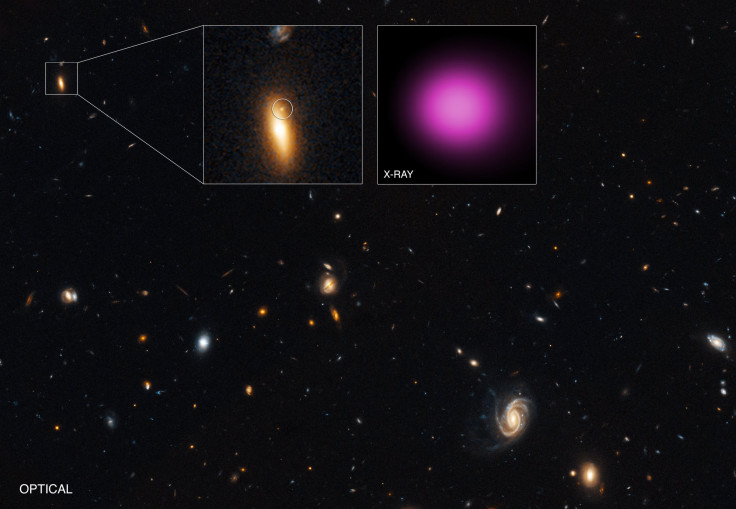Astronomers Spot A ‘Wandering’ Black Hole Perched On The Edge Of A Distant Galaxy

Supermassive black holes are usually found at the centers of their parent galaxies, encircled by a hot swirling disk of gas, dust and stellar debris. However, scientists believe that when two galaxies collide — and eventually merge — one of the two black holes can, at least for a while, become a “wanderer” floating in the outskirts of the new galaxy created by the tumultuous merger.
A team of astronomers has now discovered one such wandering black hole in the hinterlands of GJ1417+52 — a lenticular galaxy located 4.5 billion light-years from Earth. Scientists theorize that this black hole — XJ1417+52 — may originally have been at the center of a small galaxy that merged with GJ1417+52.
The black hole was discovered using the Hubble Space Telescope, NASA’s Chandra X-ray Observatory and the European Space Agency’s XMM-Newton X-ray observatory — all of which carried out several observations of the object between 2000 and 2015.
“The location and brightness of the optical source in the Hubble image that may be associated with XJ1417+52 suggest that the black hole could have originally belonged to a small galaxy that plowed into the larger GJ1417+52 galaxy, stripping away most of the galaxy’s stars but leaving behind the black hole and its surrounding stars at the center of the small galaxy,” NASA said in a statement released Wednesday. “If this idea is correct the surrounding stars are what is seen in the Hubble image.”
At its peak, XJ1417+52 was roughly 10 times brighter than the brightest X-ray source ever seen for a wandering black hole, and was also about 10 times more distant than the previous record holder for a wandering black hole.
“The bright X-ray emission from this type of black hole comes from material falling toward it. The X-rays from XJ1417+52 reached peak brightness in X-rays between 2000 and 2002. The source was not detected in later Chandra and XMM observations obtained in 2005, 2014 and 2015,” NASA explained in a statement. “Overall, the X-ray brightness of the source has declined by at least a factor of 14 between 2000 and 2015.”
The X-ray outburst seen in 2000 and 2002 may have occurred when a star passed too close to the black hole and was torn apart. This would have caused some of the infalling gaseous debris to heat up and become bright in X-rays.
© Copyright IBTimes 2024. All rights reserved.






















